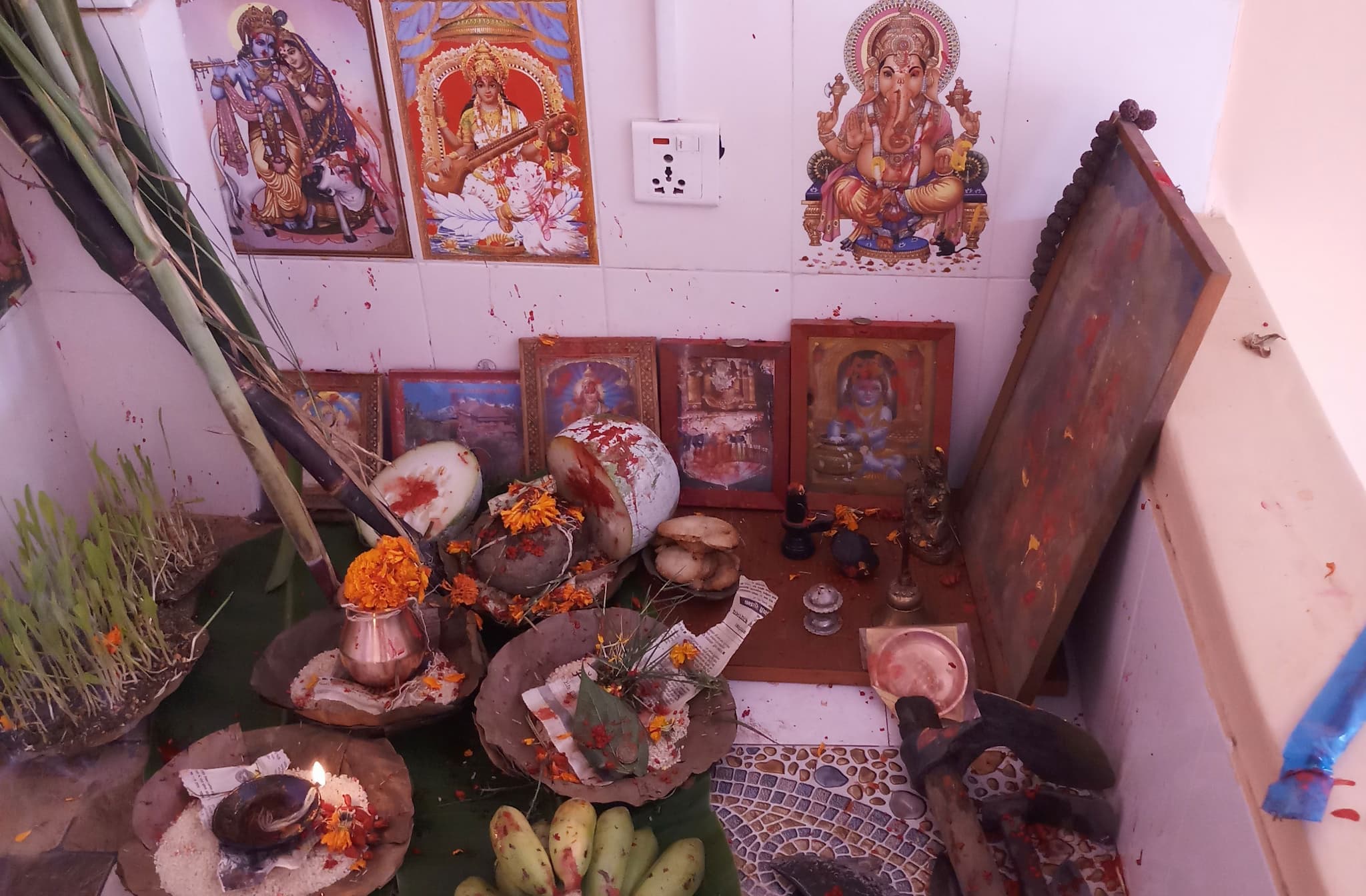Hindus Dashain Festival begins

 bySuman Neupane
bySuman NeupaneNepal's biggest Hindu festival, Bada Dashain festival, commenced today with the observance of Ghatasthapana, the ritual that sets the tone for the nine-night Navaratri celebration.
During the rites, devotees across the country worshiped Goddess Shailaputri and sowed maize and barley seeds in soil and cow dung to germinate jamara (barley shoots), a key Dashain symbol. Priests also offered prayers to Durga Bhavani, invoking nine manifestations of Goddess Durga.
Meanwhile, at the Hanumandhoka Dashain Ghar in Kathmandu, as well as at the historic Gorakhkali temple in Gorkha, priests led the main jamara-sowing rituals. Tradition holds that households plant their own jamara only after these central rites conclude. Similar ceremonies were carried out at Gorkha's Manakamana temple and other various shrines and temples including Bhadrakali, Guheshwari and Maitidevi in the capital; Dakshinkali in Kathmandu; Palanchok Bhagawati in Kavre; Manakamana in Gorkha; and prominent shrines in Saptari, Nuwakot, Doti, Baglung, Dharan, Dadeldhura, Bhojpur, Banke and Taplejung are seeing the large number of crowds today (22-09-2025).
Dashain commemorates a great victory of the gods over the wicked demons. One of the victory stories told is the Ramayan, where the lord Ram after a big struggle slaughtered Ravana, the fiendish king of demons. It is said that lord Ram was successful in the battle only when goddess Durga was evoked. The main celebration glorifies the triumph of good over evil and is symbolized by goddess Durga slaying the terrible demon Mahisasur, who terrorized the earth in the guise of a brutal water buffalo.
The first nine days signify the nine days of ferrous battle between goddess Durga and the demon Mahisasur. The tenth day is the day when Mahisasur was slain, and the last five days symbolize the celebration of the victory with the blessing of the goddess. Dashain is celebrated with great rejoice, and goddess Durga is worshiped throughout the kingdom as the divine mother goddess.
The tenth day of the festival is the 'Bijayadashami'. On this day, a mixture of rice, yogurt and vermilion is prepared. This preparation is known as "tika". Often Dashain tika time is different each year. Elders put this tika and jamara which is shown in the Ghatasthapana on the forehead of younger relatives to bless them with abundance in the coming years. Red also symbolizes the blood that ties the family and community together. Elders give "Dakshina", or a small amount of money, to younger relatives at this time along with the blessings as they visit. This continues to be observed for five days till the full moon, during which period families and relatives visit each other to exchange gifts and greetings. This ritual of taking tika from all the elder relatives (even the distant relatives) helps in the renewal of the community ties greatly. This is one reason why the festival is celebrated with so much vigor and enthusiasm.
The Nepal Calendar Determination Committee has set 11:53 a.m. on October 2 (Asoj 16) as the most auspicious hour for receiving Dashain tika.








